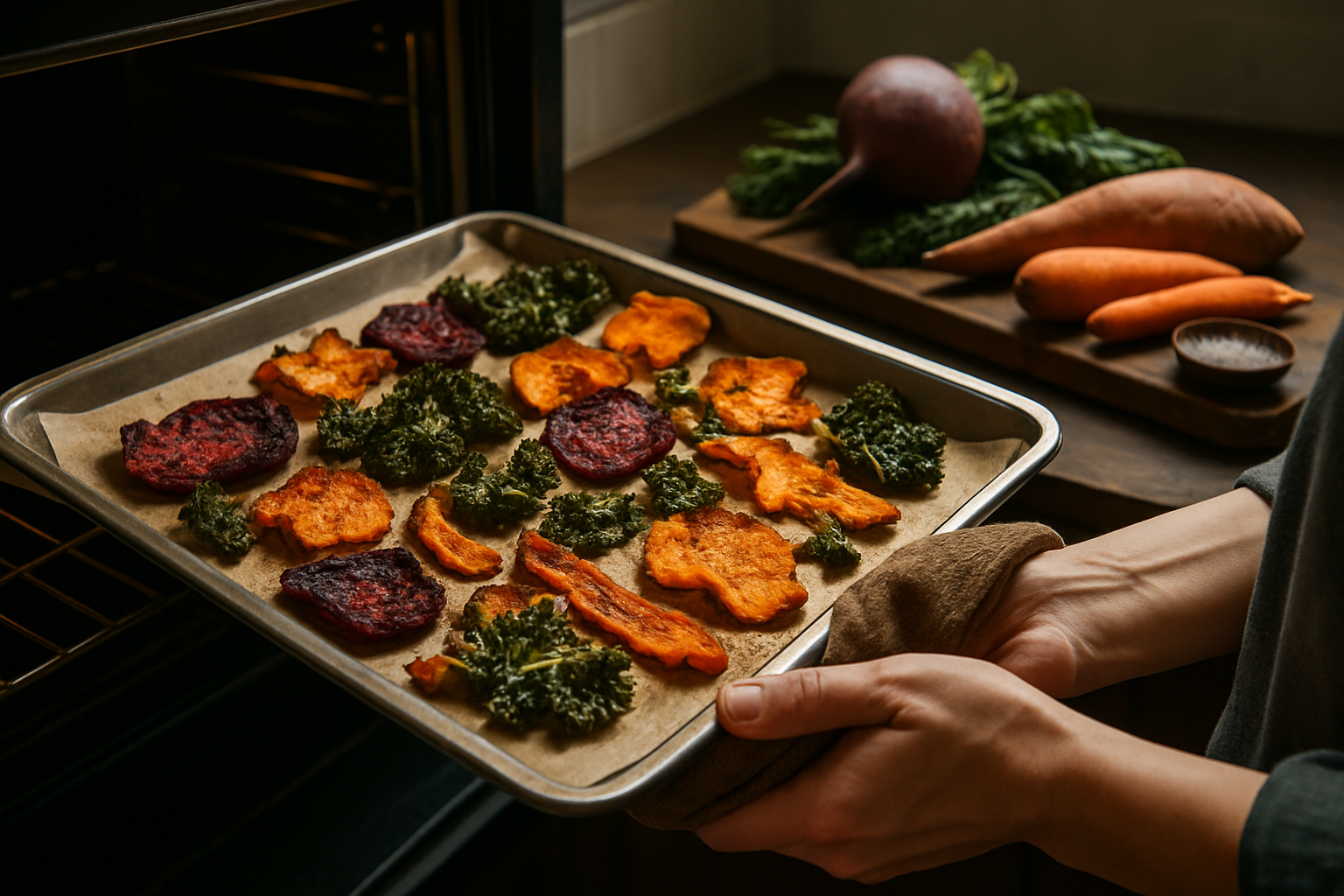Crunch Time: Exploring the Crispy World of Vegetable Chips
Vegetable chips are taking the snack world by storm, offering a delightful crunch and a healthier alternative to traditional potato chips. From beet to kale, these colorful crisps are not only visually appealing but also pack a nutritional punch. Let's dive into the vibrant universe of veggie chips and discover how they're revolutionizing our snacking habits.

From Garden to Chip: The Making of Veggie Crisps
The process of transforming vegetables into crispy chips is both an art and a science. It begins with selecting high-quality, fresh vegetables at their peak ripeness. These are then carefully washed, peeled (if necessary), and sliced into thin, uniform pieces. The slicing technique is crucial, as it affects the final texture and cooking time of the chips. Some manufacturers use state-of-the-art equipment to achieve perfectly consistent slices, while others prefer a more rustic, hand-cut approach. The sliced vegetables are then typically dehydrated or fried at low temperatures to remove moisture and create that satisfying crunch. Many producers are now experimenting with air-frying techniques to reduce oil content further. The final step often involves seasoning the chips with a variety of flavors, from simple sea salt to exotic spice blends, catering to diverse palates and culinary trends.
Nutrient-Dense Nibbles: The Health Benefits
One of the primary reasons for the surge in popularity of vegetable chips is their nutritional profile. Unlike traditional potato chips, which are often criticized for their high calorie and fat content, vegetable chips can offer a range of health benefits. Many varieties are rich in vitamins, minerals, and antioxidants. For instance, beet chips are high in folate and manganese, while kale chips provide a good dose of vitamins A, K, and C. Sweet potato chips offer beta-carotene, and carrot chips are packed with vitamin A. Additionally, many vegetable chips are higher in fiber than their potato-based counterparts, which can aid in digestion and promote feelings of fullness. However, it’s important to note that not all vegetable chips are created equal. Some may still be high in salt or oil, so it’s crucial to check labels and practice moderation.
DIY Delight: Crafting Veggie Chips at Home
For those who want to take their veggie chip experience to the next level, making them at home can be a fun and rewarding process. Homemade vegetable chips allow for complete control over ingredients and seasonings, making them an excellent option for those with dietary restrictions or adventurous taste buds. To create your own veggie chips, start by selecting fresh, firm vegetables. Slice them thinly using a mandoline or sharp knife, then toss with a small amount of oil and your chosen seasonings. Baking is often the healthiest method for home cooks, requiring just a single layer of vegetable slices on a baking sheet in a low-temperature oven. The key is to watch them closely, as different vegetables have varying cooking times. Experimenting with different vegetables and seasonings can lead to unique flavor combinations that might not be available in store-bought varieties.
Beyond the Bag: Creative Uses for Veggie Chips
While vegetable chips make for an excellent standalone snack, their versatility extends far beyond the chip bowl. Innovative chefs and home cooks are finding creative ways to incorporate these crunchy morsels into a variety of dishes. Crushed vegetable chips can serve as a colorful and flavorful breading for fish or chicken, adding both texture and nutrients. They can be used as a garnish for soups or salads, providing a satisfying crunch and visual appeal. Some bakers are even incorporating finely ground vegetable chips into bread and cracker recipes for added flavor and nutrition. In the beverage world, bartenders are using vegetable chips as unique garnishes for cocktails, creating drinks that are as visually striking as they are tasty. The possibilities are endless, limited only by one’s culinary imagination.
Crunchy Tips & Tasty Facts
• Store-bought vegetable chips can have a shelf life of up to 6 months if kept in a cool, dry place.
• Beetroot chips are naturally sweet and can satisfy sugar cravings while providing essential nutrients.
• Parsnip chips offer a nutty flavor profile and are an excellent source of potassium and vitamin C.
• Homemade vegetable chips can be seasoned with nutritional yeast for a cheesy flavor without dairy.
• Some vegetable chips, like those made from kale or spinach, can provide a full serving of vegetables in just one ounce.
• Taro chips, popular in many Asian cuisines, offer a unique purple hue and are rich in fiber and vitamin E.
As the vegetable chip trend continues to grow, it’s clear that these colorful crisps are more than just a passing fad. They represent a shift towards healthier, more diverse snacking options that don’t compromise on taste or texture. Whether store-bought or homemade, vegetable chips offer a world of flavors and nutritional benefits that are reshaping our snacking habits. So the next time you’re reaching for a crunchy snack, why not take a colorful detour from the traditional chip aisle and explore the vibrant, veggie-filled possibilities that await?





